Car owners often notice that the car jerks when accelerating. Such dips mainly appear at low and medium speeds. They are characterized by the following:
- Failure from 2 to 9 seconds;
- A jerk in 1-2 seconds;
- Twitching - a series of jerks;
- Swinging is a series of failures.
Reasons for overclocking failure
- Gas wiring;
- Poor mass.
If the advice above did not help, only diagnostics will decide the reason for this behavior of the gas pedal. Incorrect operation of systems, errors, the composition of the fuel mixture - the diagnostician will name a specific malfunction.
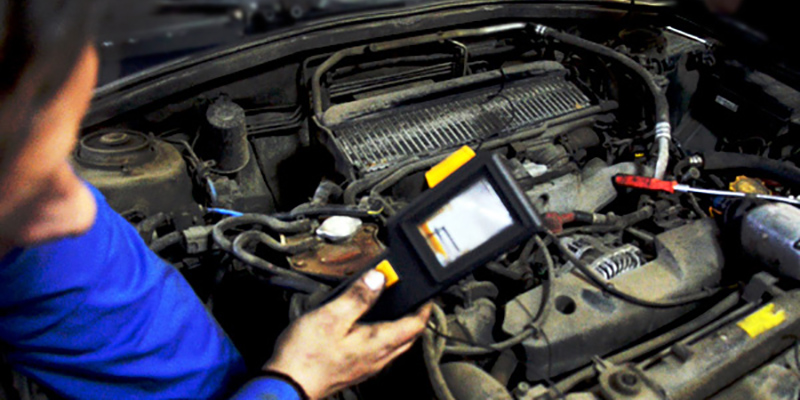
Even if the engine is working properly, the car may move jerky when accelerating. Motors that meet environmental standards Euro-4 and higher have such an unpleasant property. It's about the reaction of the electronic throttle by pressing the gas pedal. It is non-linear for the first 3-4 centimeters of travel. This can lead to overclocking failure.
- Shifting gears softer;
Car owners often notice that the car jerks when accelerating. Such dips mainly appear at low and medium speeds. They are characterized by the following:
- Failure from 2 to 9 seconds;
- A jerk in 1-2 seconds;
- Twitching - a series of jerks;
- Swinging is a series of failures.
Few people like this behavior of a car. If the car dulls during acceleration, you have to press the pedal harder, which increases fuel consumption. This is also a question of the safety of the driver and passengers. When going out to overtake, a quick reaction to the gas is required, but the car "thinks for a long time", which is why you may not have time to complete the maneuver. With such a thoughtfulness of the gas pedal, the ride becomes uncomfortable.
Reasons for overclocking failure
You can use diagnostics to determine the reason why the car jerks. Possible problems:
On HBO, the problem may arise due to:
- Malfunctioning HBO control unit;
- Interference in the harness to which the fuel injectors are connected;
- Gas wiring;
- Poor mass.
How to fix overclocking dips
- Check wires and ignition coils. In the event of a breakdown, the spark plug wires spark and glow in the dark. The engine troit, twitching appears. This comes from "age", poor quality parts or poor contact with candles. The problem may be related to engine temperature. The interwinding resistance of the coils and the thermal mode of operation change together, which is why the car on gasoline jerks during acceleration.
If you have a diesel engine, jerks during acceleration are definitely not related to the operation of the coils, they are not there. - Inspect the spark plugs. Poor contact with wires, heavy carbon deposits, too lean or rich fuel mixture will destroy them. Unscrew and check each spark plug as in our article "Diagnostics of ICE operation by spark plugs", where we gave examples of faulty spark plugs.
- Check fuel, oil and air filters. Over time, they become clogged, which leads to a deterioration in dynamics, an increase in fuel consumption and periodic failures. You can replace them yourself, they are inexpensive and easy to install.
If the advice above did not help, only diagnostics will decide the reason for this behavior of the gas pedal. Incorrect operation of systems, errors, the composition of the fuel mixture - the diagnostician will name a specific malfunction.
Even if the engine is working properly, the car may move jerky when accelerating. Motors that meet environmental standards Euro-4 and higher have such an unpleasant property. The point is the reaction of the electronic throttle valve to pressing the gas pedal. It is non-linear for the first 3-4 centimeters of travel. This can lead to overclocking failure.
Chip tuning for Euro-2 or Euro-0 standards improves the response of the gas pedal and solves the problem. The ECU firmware has a number of other advantages:
- Improves overall dynamics, idle and low-speed traction;
- The car does not dull when the air conditioner is on;
- Shifting gears softer;
- Reduces fuel consumption while maintaining driving style.
Contact ADACT partners in your city for chip tuning. We guarantee a 10-day test drive, money and stock refund if you don't like the firmware.
4 assessments, the average: 4.75 out of 5
Cars are the most complex mechanisms with very interesting systems of work. Each time a certain malfunction or problem is discovered, the car owner seeks to understand its nature, and, if possible, eliminate it on his own. If failures began to appear in your car when you press the gas, you should contact a specialist, but before that you can check several of the most common options for the presence of this unpleasant manifestation.

The reasons for this phenomenon can be hidden in various factors. For carburetor cars for example, it can even be a physical malfunction and a sudden movement of the throttle valve. But often we are talking about the breakdown of certain functions of the electronic control of the fuel supply system. Let's take a closer look at all the subtleties of this breakdown.
The type of dips when pressing the gas - determine the cause of the malfunction
Before drawing certain conclusions about a problem, it is worth determining the type of failure, which will often tell the node in which to look for a breakdown. The most common option for carburetor engines- this is a second lack of traction, and then a sharp jerk. The carburetor itself is often to blame for this, but candles can also be to blame for this phenomenon.
Given the fairly simple work with candles and wires, this theory should be tested first. Such failures due to the fault of candles or wires can occur on injection and even diesel power units... Also, the following nodes may be the culprit for the presence of such problems in the car:
- fuel distribution system - the jets can become clogged, which causes jerks when you press the gas pedal sharply;
- damage directly to the carburetor or injector system;
- inconsistencies in the operation of the electronic fuel control system;
- breakdown of engine temperature sensors and enrichment of the gasoline mixture;
- problems in electronic system car, computer malfunction.
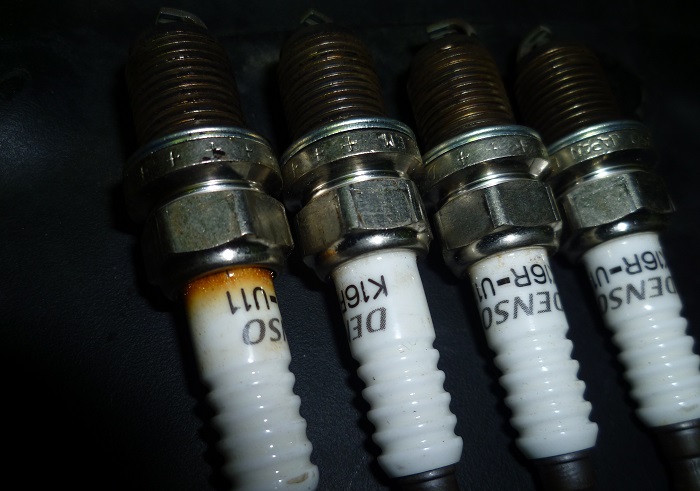
The last breakdown is the most frequent manifestation that determines the negative aspects of the operation of transport. Today is a breakdown or failure to work properly on-board computer makes the vehicle impossible to operate. This is the main disadvantage of high technologies, which are so eager to be introduced into modern technology.
But failures when you press the accelerator pedal are not always the result of a failure of the computer or sensors. The most common cause of the problem is spark plug breakage. But if after replacing the candles after a few hundred kilometers the problem repeats, it is worth looking for the problem in the sensors that affect the enrichment of the mixture. Due to their incorrect operation, candles quickly fail.
Non-standard cases and causes of failures when pressing the gas pedal
Often with this problem, drivers turn to specialized service centers, therefore communication with the masters of such companies can often tell you non-standard reasons for engine failures. Sometimes, when diagnosing a car, specialists find uneven engine operation, which, combined with dips during acceleration, means a breakdown of the main sensors of idle speed and fuel economy.
Sometimes failures happen due to lack of fuel, but it often happens that gasoline flows in a river without any obstacles, which also makes it difficult to ignite it properly. In such situations, the car can stall and display incredible fuel consumption figures. Dealing with such problems can only be as follows:
- bringing the car to a specialized service with high-quality computer diagnostics;
- performing a thorough check of the operation of each unit of the machine, in particular the fuel supply system;
- preventive cleaning of the injector, jets or nozzles, depending on the type of engine;
- checking the correct operation of the engine control computer program;
- replacement of spark plugs, replacement of fuel filters and other elements that require updating.
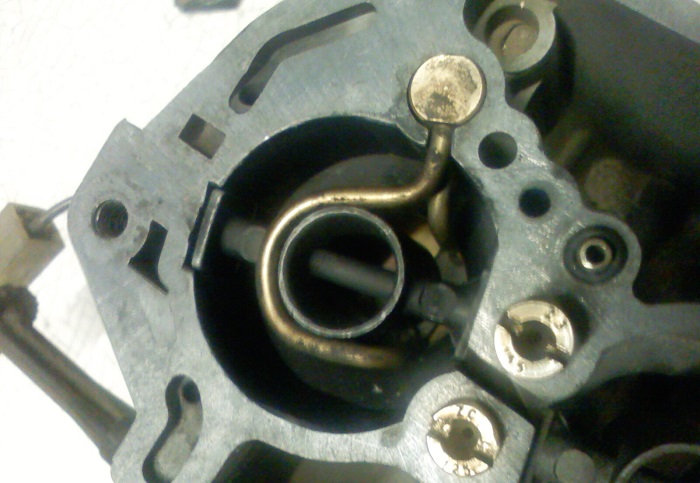
There are a wide variety of problems that can cause these types of problems. Therefore, you should not focus only on the fuel supply system or only on the candles. It is necessary to comprehensively diagnose the car, find all possible malfunctions and eliminate them. Of course, you can do it yourself only if you have a sufficient number of skills and tools.
By contacting specialists, you get access to the vast experience of professionals. If you are faced with a certain problem, then other owners of cars of your make and model have faced this task more than once. Therefore, with the help of the experience of the official service center, it will be much easier to solve the problem.
See more information about possible reasons failure when the engine is running in the video:
Summing up
If you encounter problems such as dips when you press the gas pedal, head to the car store and buy new spark plugs. This often helps to get rid of the problem or to delay the trip for a while. service center... If the problem recurs again, you should go to the specialists and carry out a complete diagnosis of the system. computer control and fuel supply.
After such research, you can easily get the necessary information about the problem and make a decision on the repair or replacement of certain parts of the machine. Often, repairing such a problem is not too expensive. Have you had any problems with symptoms such as engine failure?
Modern cars with injection systems, powerful and economical engines are good for long journeys. But it was there, far from the "advanced" service stations and qualified specialists, that the alarming signal " Check Engine
"(- a light on the instrument panel indicating that (the electronic control unit) has detected problems in the engine management system), especially frightens travelers. Some panic and, fearing irreversible consequences, pull the cable out of the trunk. Others, on the contrary, are cold-blooded: since the engine is running, it means that the lamp “just made a mistake” and “will go out by itself” - you can go at the same pace.
The ability to recognize the symptoms of typical injection ailments, to imagine what a burning yellow lamp threatens, will help save nerves, money, time and motor. If the engine is in good working order, the “Check Engine” signal should go out 0.6 seconds after starting - this is enough for the self-diagnosis system to make sure that everything is in order. If, nevertheless, the light continues to burn, then there is a place for the presence of a malfunction, which can be detected using a special motor tester at a service station or on our own. As for "on their own" - this is a superficial diagnosis, which can give an approximate definition of a malfunction, the reason for this is the lack of special measuring instruments and parameters of the components of the injection system. But on the road, in the absence of a service station, this can help you and give you confidence that the car will still reach the designated point.
Something is not working, what can be now?
Position sensor crankshaft... Anything but this. This is the only sensor whose malfunction will not even allow you to reach the garage. His refusal is an exceptional phenomenon. Installed on the bore of the oil pump housing at a distance of (1 ± 0.4) mm from the top of the crankshaft pulley teeth. Based on a synchronization pulse from the crankshaft position sensor, the controller determines the position and speed of the crankshaft and calculates the moment when the injectors and the ignition module are triggered.
Gasoline pump - you won't go anywhere. If the gasoline pump began to work worse, the reasons are mainly due to dirt and water in the gasoline, then there are dips, loss of power, pops into the intake system. If he dies completely, then the car will not go further: the heart has stopped.
If all other sensors and mechanisms are malfunctioning, the engine will work: the computer will be rebuilt to an emergency program.
The "death" of the camshaft position (phase) sensor is very difficult for an inexperienced repairman to detect without diagnostic equipment. Although the engine operates in an abnormal mode of paired-parallel fuel supply, when each injector is triggered twice as often (once for each revolution of the crankshaft), do not try to determine this by ear. The exhaust loses its former purity, but it is possible to catch an increase in toxicity only by measuring the driving cycle. You can understand that the engine is unhealthy by the increased fuel consumption. Another sign of a malfunction is a malfunction of the self-diagnosis system. Failure of the phase sensor will not lead to other unpleasant consequences for the engine.
If your car demanded to "play" the gas pedal when starting, lost its former agility in the modes of maximum power and torque, the mass air flow sensor is most likely to blame. The control system, responding to its failure, "late" the ignition by 10-12 grams. In this case, the response to the gas pedal at the beginning of acceleration may even improve. The exhaust will become dirtier, and the engine will be noticeably more voracious. Without requiring the car's former agility, it is quite possible to get home, even if there are several hundred kilometers ahead.
It is much more difficult to drive with a faulty throttle position sensor. Symptoms are clearly visible - loss of power, unpleasant jerks and dips during acceleration, unstable idle speed, no engine braking. The engine seems to have been replaced, and the warning light may not light up. The control unit is capable of detecting an open or short circuit in the sensor and its circuit, but gives in to the "floating" signal.
Long driving with this malfunction is not just unpleasant, but dangerous. Under heavy loads, the computer, not receiving the proper information, will proceed from the fact that the car is moving in a moderate mode, on an economical mixture. Therefore, driving "with a pedal in the floor" will lead to overheating and detonation with all the ensuing consequences. In this case, you should move to the garage or service station slowly, at a gentle pace.
A faulty auxiliary air regulator makes itself felt by a difficult start with a released gas pedal and unstable idle speed. The unit is non-separable, if flushing the idle and throttle channels did not help, you will have to change it entirely.
If the coolant temperature sensor is out of order, the computer assumes the starting temperature of the engine equal to 0 ° C and gives the appropriate command to the auxiliary air regulator. The suboptimal ratio of the amount of gasoline and air will make it difficult to start in frost. Within two minutes after the engine was still started, the computer will decide that the coolant temperature has reached 80 ° C. So not only start up, but also warm up the engine will have to work with the gas pedal.
Another trouble awaits the driver when the engine heats up to a temperature close to critical, for example, in heat, in a traffic jam. The computer, receiving an incorrect signal and considering that the temperature of "Tosola" is normal, does not correct the ignition timing. The engine will lose power and detonate.
It is extremely rare that the knock sensor fails. More often the wires that fit to it are damaged. They need to be checked if the self-diagnosis lamp comes on at 3000 rpm or higher. The engine will become more sensitive to the quality of gasoline - refueling with untested fuel will lead to knocking fingers.
Failure of the ignition coil, unfortunately, is not uncommon. Signs - dips during acceleration, loss of power, unstable idles and, finally, a complete shutdown of two cylinders. If you need to drive several kilometers with a "twin" engine, disconnect the connectors of the corresponding pair of injectors so that gasoline does not wash off oil from the walls of non-working cylinders and does not get into the crankcase.
The oxygen sensor (L-probe) is like nothing serious, only people begin to understand over time what the greenhouse effect is, fuel is wasted and the neutralizer dies, and behind it the power drops sharply.
It should be noted that more accurate diagnostics is possible only with the use of special equipment: a motor tester, a pressure gauge for measuring fuel pressure, technical specifications... A visit to the service station will save money when buying sensors that seemed to be out of order. Since a non-working sensor is not always a breakdown of the sensor itself, but also of the wiring and ECU. You must admit that malfunctions of the control system sensors and fuel supply devices are not as terrible as it seems to some convinced adherents of carburetors or just the uninitiated. Stock up on a long journey with a crankshaft sensor, an ignition coil, and for safety reasons - a gas pump and start.
Failure when pressing the gas pedal, accelerator pedals, a problem rarely found in modern cars, but common in cars WHA... The problem is that pressing the pedal has no effect. A few seconds later, a jerk appears, the car jerks. A working engine quickly responds to pressing the gas pedal.
If you find such a problem in your car, do not delay troubleshooting for later.
What are failures?
Failure when pressing the gas pedal is the improper reaction of the motor to this. Thus, when trying to speed up the motor is not gaining the necessary momentum.
This leads to a drop in speed. It manifests itself with a gradual and sudden acceleration. Dips appear when you press the gas pedal in different ways:
- Short-term failures. There is no reaction to pressing for a couple of seconds.
- Lingering failures. The engine loses speed for 4 to 10 seconds, while it is possible that the car stalls.
- Jerks. Dips up to 1 or 2 seconds. The car seems to "jerk".
- A series of jerks. The engine increases and decreases speed, although the pedal is in the same position.
- The car jerks. Lies in a series of lingering failures.
Causes of failures when pressing the gas pedal
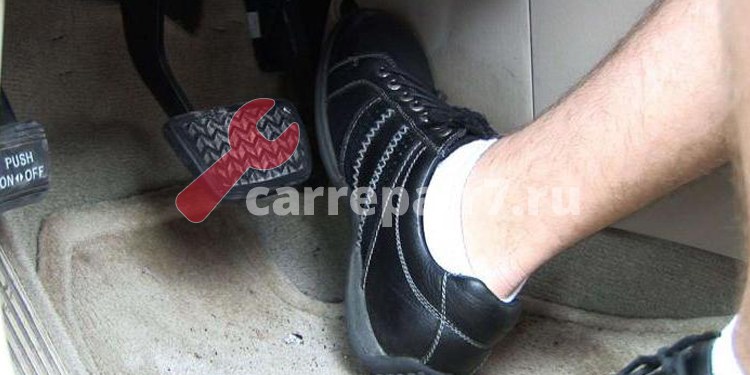
Often, the occurrence of failures occurs due to breakdown of the power system... After pressing the gas pedal, the power system increases the amount of fuel that is supplied to the cylinders. A breakdown causes a change in these proportions. Those. the motor simply does not cope with its task.
In addition, it is possible that a breakdown may be in ignition system... It is much less common. There are either candles or ignition wires. The candles must be removed and checked. The presence of carbon deposits, or too clean candles indicate a rich or lean fuel mixture, respectively. And this indicates that the ignition system is incorrectly adjusted.
Dips when pressing the gas pedal during acceleration
Defined as using computer diagnostics, as described below:
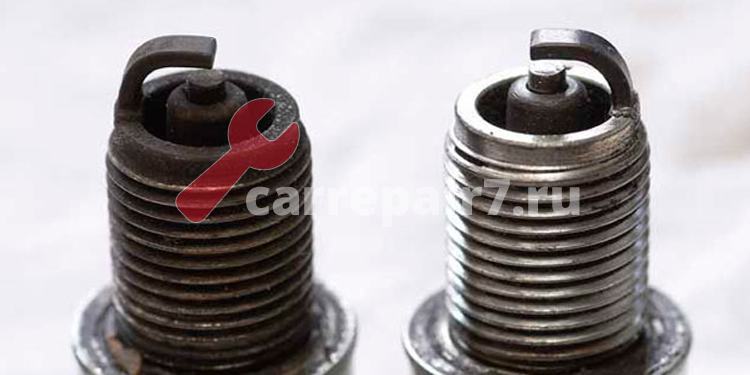
- The first step is to inspect the spark plugs. To do this, you need to extract them. The rich and poor mixture is determined by the burning of the candle or its absence (the candle is clean).
- High voltage wires can also cause the engine to malfunction.
- The throttle must be checked. If it is clogged, then this causes an untimely reaction of the engine to pressing the gas pedal.
- You need to check the status air filter... You need to change it constantly.
- The presence of errors in the ECU leads to failures.
- Malfunctions in the fuel supply system. It is also imperative to check fuel filter.
- Clogged nozzles. Clean or replace if necessary.
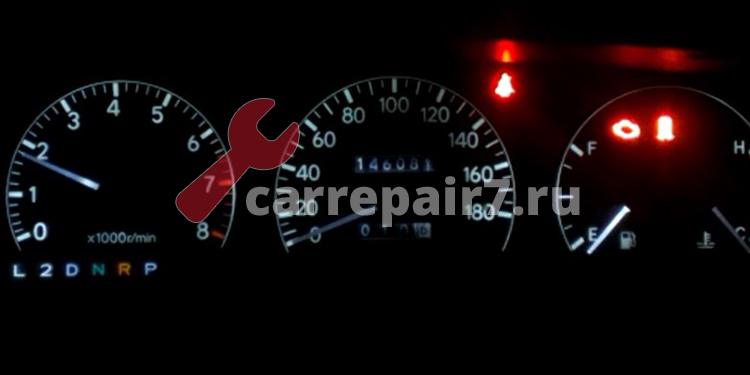
Problems also occur on Idling, of course, there will be fewer reasons. However, this is also a serious problem, and cannot be ignored, because the car will start badly and simply stall.
Troubleshooting is executed in the following order:
- The first step is to check the spark plugs. If the spark plugs are defective, they should be replaced. We recommend replacing all plugs at the same time. Purchase candles specifically for your engine. If necessary, adjust the gap, it should be 1 mm for 92 gasoline.
- The fuel filter and fuel pump diagnostics are checked. If a malfunction is detected, eliminate it.
- There may be a breakdown in the idle sensor.
- Checking injectors. If clogged, replacement or cleaning is required.
- Diagnostics of the ECU for the presence of errors.
- Checking the injector.

As noted above, the problem occurs with VAZ 2107, 2106, 2109 cars, which have a carburetor installed. Basically, problems with fuel system... Rather, it will be clogged. Therefore, to identify the cause, the fuel supply to the carburetor is checked.
Clogging reduces work fuel pump, the carburetor starts to receive less fuel. As a result, the engine starts and runs at idle without any problems, but when pressed, dips occur.
If with fuel system everything is fine, then the malfunction must be looked for in the carburetor. He is responsible for metering the supplied fuel into the air stream. Violations fail. However, at the beginning it is necessary to check for the presence of air leaks... The carburetor attachment may loosen, causing air to be sucked in through the slot, making the mixture lean.
The filter mesh is also checked. It is located in the inlet fitting of the pipeline, which goes to the fuel pump. If it is contaminated, then this is a consequence of failures.
Dips when pressing the gas pedal on the carburetor:
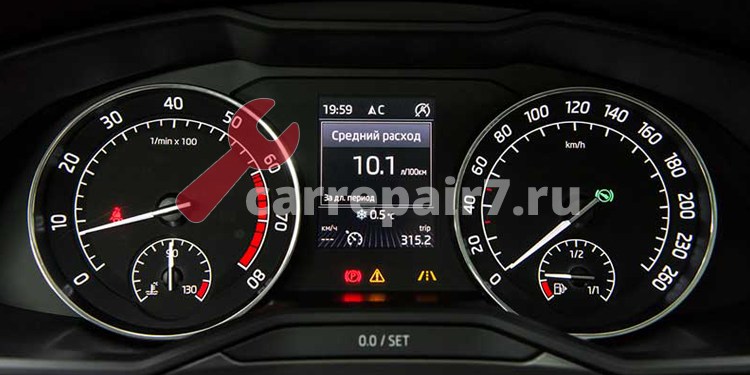
Have a car with injection system food, for example VAZ 2110, sometimes there are problems in the fuel supply system. Which is what causes failures.
Failure of the fuel pump, or clogged fine fuel filter... All this ultimately leads to the fact that the fuel does not get the right amount. And there are failures.
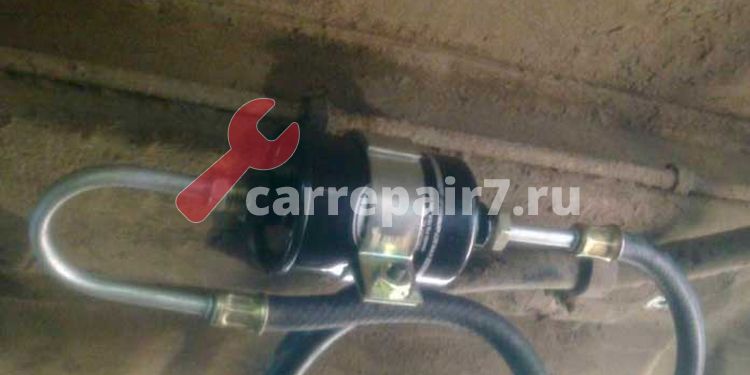
This part of the car must be checked first.
A drop in fuel rail pressure also causes dips. Optimal pressure from 2.8 to 3.2 Br.
Dips when pressing the gas pedal on the injector:
In conclusion…
Having considered in detail the reasons for n when pressing the gas pedal, you can fix this breakdown yourself. In order to get rid of this problem, it is not at all necessary to go to the service station. It is enough to know the causes, symptoms, as well as the structure of your car.
Failure of the gas pedal is a rather rare phenomenon for modern cars... However, if you notice that your iron friend began to twitch when you press the gas, you should not postpone solving this problem until later.
In today's article, we will find out the reasons for this phenomenon, and also consider ways to solve this problem.
What is it?
Failure when pressing the gas pedal is a sudden failure of the engine. internal combustion, which can occur in any of the modes and loads. Sometimes it can be accompanied by sudden braking of the car and its stopping. There are several types of this phenomenon:
- Short dips when pressing the gas pedal (about 2-3 seconds).
- Jerking (series of jerks when moving).
- Deep failure (can last up to 10 seconds).
- Dash (1-2 seconds).
- Rocking (series of dips).
Possible reasons
Most often, this problem is associated with a spontaneous change in the crankshaft speed. The latter can produce revolutions regardless of the position of the accelerator. That is, the problem is accompanied by a delay in the response of the motor to pressing the accelerator. 
Jerks and dips when pressing the gas can occur during acceleration, at the beginning of movement, with a constantly stable position of the accelerator. You can determine the true cause of this phenomenon yourself (by checking the status of the sensors) or using diagnostic equipment. Most often, jerks and dips occur due to abnormal fuel pressure in the rail. Also, the problem may be lurking in or TPS (throttle position device). These two mechanisms are responsible for mixture formation, namely for the supply of a specific portion of air. These sensors rarely break, but failures when the gas is pressed are most often their fault. Sometimes contacts are simply clogged on them.
Dips when driving
The jerking of the car at the moment when it starts to move occurs, as we have already said, due to a delay in the response of the motor to pressing the pedal. The jerk itself occurs when the throttle valve is open, that is, when the electronic control unit determines the moment of transition from idle to load mode on the basis of the TPS signal. At this time, the fuel supply should be as high as possible. If the system does not provide a normal level of pressure, the machine is not able to continue moving - it stops and stalls. For the ECU, the location of the pedals in the car is not important, since all actions with the supply and analysis of electronic signals are carried out automatically. 
For the same reason ( low level fuel pressure), the car cannot accelerate. Here, the control unit, as in the previous case, seeks to increase the fuel supply by giving a signal to open the throttle valve. But due to the low pressure, dips are felt, and, accordingly, a decrease in speed when driving.
Speed dips: what to do?
If the car has already picked up speed and is moving at a stable speed, but suddenly there was a failure, then it was caused by a malfunction in the ignition system. In this case, it is necessary to diagnose it. It is done as follows.
First you need to turn off the ignition, then pay attention to the reliability of the attachment of the wiring harness block to the ignition coil. When starting, the motor should not emit a characteristic crackle (if this is observed, then a high voltage breakdown has occurred).
Often, dips when you press the gas happen due to a poor-quality spark plug. With the help, we unscrew each of them and evaluate the external state. The end should be free of deposits and oxidation. The very ability of an element to generate a spark is determined by an ignition tester (for example, the domestic device "Test-M"). If, after installing new spark plugs, the car jerks again when driving, inspect the throttle position sensor. About malfunction this mechanism may report signs such as:
- A sharp decrease in engine power.
- Uneven work on
- Changes in fuel consumption.
Engine trophy
This phenomenon can also provoke a failure when the gas is pressed sharply. The fact is that during tripping in an engine of 4, 1 or 2 cylinders at once do not work. Hence all the ensuing consequences. 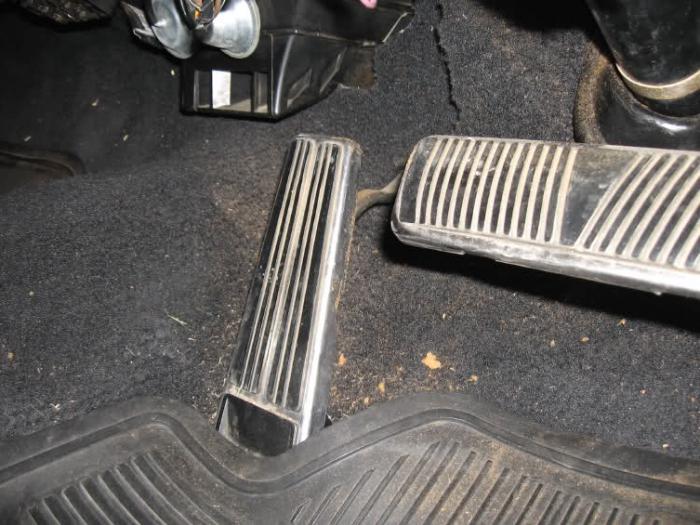 Below we list the main signs indicating this phenomenon:
Below we list the main signs indicating this phenomenon:
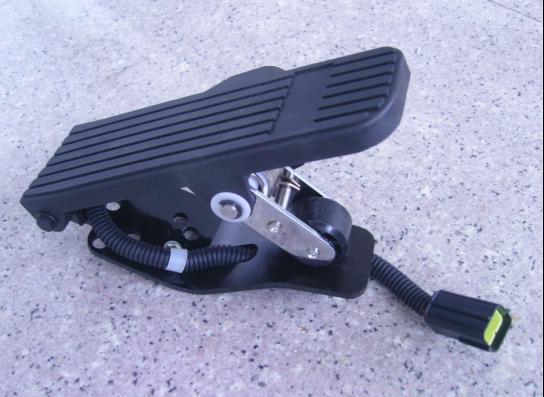
As you can see, the device passenger car is such that the motor itself will make itself felt in the event of any breakdown. Most often this happens due to improper Also, triplet occurs with faulty candles. The latter does not emit a spark to ignite the mixture, as a result of which poor acceleration dynamics is observed and increased consumption fuel. Less commonly, this problem is provoked by wear. piston rings or burnout of the piston / valve. 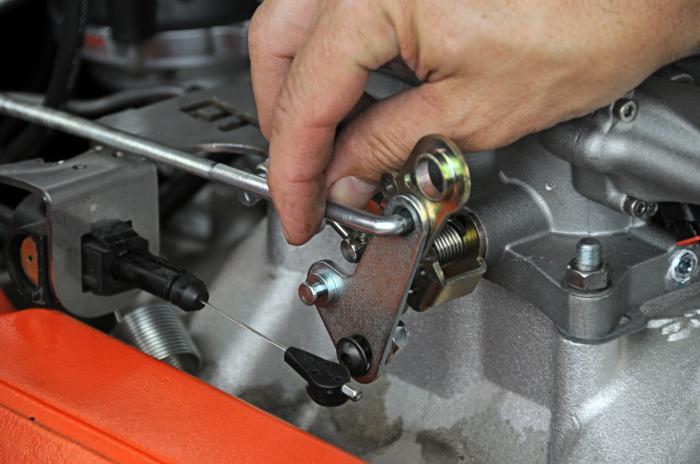
To solve this problem, you should determine which of the cylinders stopped working. To do this, the high-voltage ignition wire is removed one by one from the spark plugs. But this is done with special care, since there is a risk of electric shock to the body. After removing one of the wires, they increase to 1.5 thousand. The valve is also removed from the cylinders one by one. If the sound of the engine has not changed, then the cylinder is working correctly, and the search for the inoperative element continues further. And so on until a faulty mechanism is found.
High voltage wire diagnostics
Since this part is an integral part of the ignition system, it should also be diagnosed. To do this, we need to remove the tip that is put on the candle. The wire itself is in a special winding. Its tip has a special persistent nickle. Through the last part, current is supplied to the candle. So, the vein of this wire should fit as tightly as possible to the penny. Over time, this place can oxidize, due to which the supply of current stops or occurs partially, which provokes the triplet of the engine. 
How to check the oxidation of a contact? This is done as follows. The second probe of the multimeter is connected to the central core of the wire. If the values on this device have not changed, then this place has poor contact. In this case, the damaged area is cut off by 0.5-1 centimeters. Sometimes the core of the wire can deform or oxidize not at the tip, but near it. In this case, you need to cut the cord until the multimeter shows voltage (of course, if the length of the mechanism allows it).
Gas pedal corrector
Some motorists, in order to reduce dips when pressing the gas, install so-called correctors. They can be purchased at a price of 3 to 10 thousand rubles. Such devices electronically shorten the accelerator travel. This does not change the position of the pedals in the vehicle. Usually, correctors have a removable control key fob and operate in three modes ("Sport", "Speaker" and "Economy").
In principle, this device does not solve the problem with jerks, therefore only avid tuning lovers install it. By the way, after such an upgrade, many drivers complain about the difficult driving through traffic jams - the car starts to twitch even more.
Conclusion
So, we examined the features of failures when pressing the gas pedal and figured out how to fix this malfunction with our own hands. As you can see, in order to cope with this problem, it is not at all necessary to go to a car repair shop. It is enough to at least superficially know the structure of a passenger car.


